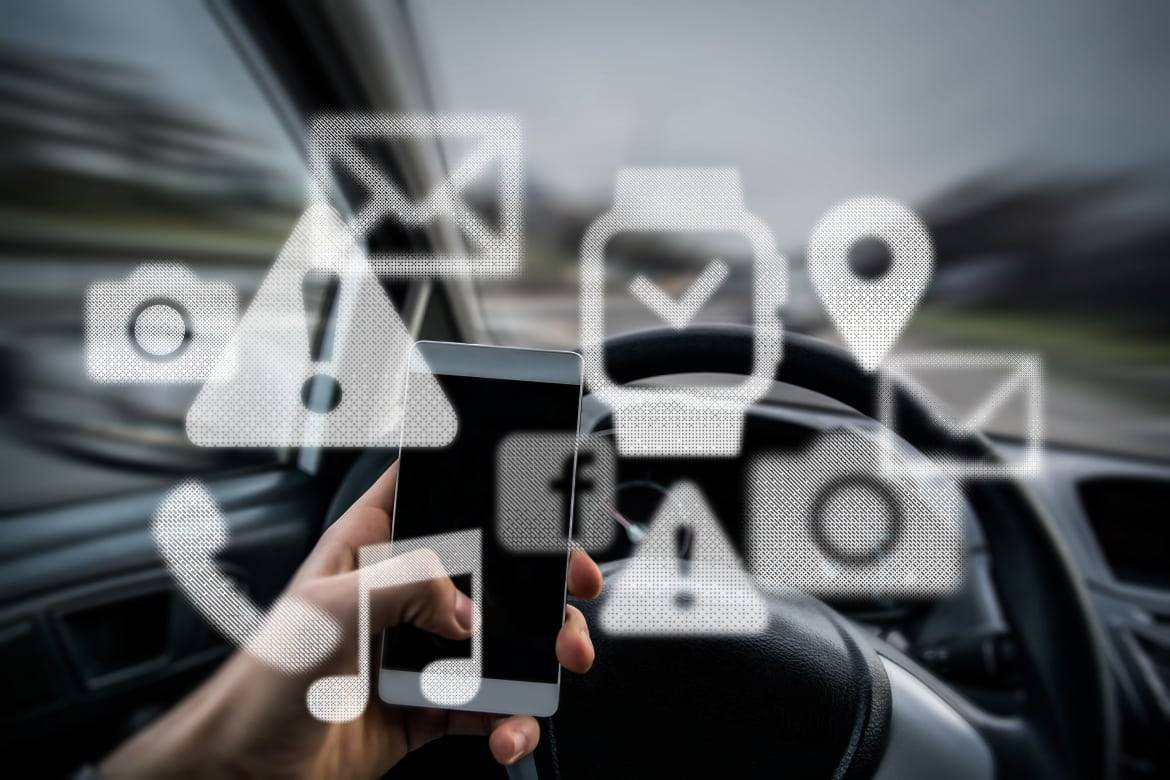This Is Your Brain on Apps: The Distracted Driving Dilemma


CARS.COM — Most motorists know that driving while distracted is extremely dangerous, yet they continue to do it anyway in frightening numbers. You might consider it a case of collective cognitive dissonance if distracted drivers felt stress or mental discomfort over the contradiction. But that’s just the problem — they don’t.
Related: Add ‘Pokemon Go’ to Driving Distractors List
Dr. Breeda McGrath, Dean of Academic Affairs at The Chicago School of Professional Psychology, explained that people are lulled into feeling that driving doesn’t require their full attention. As modern cars become more automated and less dependent on driver inputs to operate smoothly, that false sense of security is only reinforced. This result is motorists’ belief that they’ve got this driving thing handled so they can perform other tasks simultaneously — which they decidedly cannot.
According to the Centers for Disease Control and Prevention, 3,154 people in 2013 were killed in crashes involving a distracted driver. That’s in addition to 424,000 injuries linked to distracted driving, a 10 percent increase since 2011. All told, distracted driving was implicated in nearly 1 out of 5 crashes.
“Most drivers feel safe and in control, and therefore act accordingly,” McGrath told Cars.com. “Driving can feel like a passive, automatic activity that doesn’t require thinking, so in that state, people are free to think [about] a variety of other activities, things they want to do, people they need to connect with. It’s essentially about multitasking.”
Moreover, there’s the it’s-not-going-to-happen-to-me factor to contend with, especially among teen drivers who commonly feel a sense of invulnerability. Therefore, in all the times people use their smartphones while driving and nothing bad happens, they receive primarily positive feedback neurologically and chemically without the competing message of impending disaster, McGrath explained.
“The consequences are generally not serious most of the time, so the likelihood of something happening feels small,” she said. “If you experienced a fender-bender or crash every time you used your phone while driving, you would quickly change your behavior.”
Earlier this summer, the dangers of distracted driving were illustrated with digital clarity as the wildly popular “Pokemon Go” smartphone-app-based game was implicated in multiple car crashes. But Pokemon was hardly the point of origin for smartphone distractions. A Liberty Mutual Insurance study released in August showed that while just more than a quarter of teens admitted to texting and driving, more than two-thirds had used smartphone apps behind the wheel due to an unconscious bias that the latter behavior is somehow safer.
In an opinion poll from earlier this year, the National Safety Council asked motorists ages 18 to 39 which social media platforms they would use while driving, and how often they would use other varied smartphone functions, if these activities weren’t illegal.
Here are the top 10 social media platforms people feel comfortable using while driving, followed by the percentage of survey respondents reporting so:
10. Vine, 7 percent
9. Pinterest, 10 percent
8. LinkedIn, 13 percent
7. Waze, 13 percent
6. Snapchat, 13 percent
5. WhatsApp, 24 percent
4. Instagram, 33 percent
3. YouTube, 35 percent
2. Twitter, 37 percent
1. Facebook, 74 percent
Similarly, the top 10 smartphone functions drivers are willing to use, followed by the percentage reporting their willingness to do so “often,” “occasionally” or at least “rarely,” are:
10. Video chat, 23 percent
9. Internet search, 30 percent
8. Camera or video, 32 percent
7. Social media, 34 percent
6. Emails, 34 percent
5. Checking alerts, 52 percent
4. Text messaging, 53 percent
3. Digital music, 68 percent
2. GPS, 79 percent
1. Phone calls, 79 percent
OK, so people say they know using smartphone functions while driving is dangerous, but they don’t actually believe it’s dangerous? What are we supposed to do about that?
It’s not hopeless. McGrath says we need only look to successes with seat-belt compliance, motorcycle-helmet use and smoking cessation for a model to follow. This model starts with effective lawmaking and enforcement, as “folkways follow state ways,” she said. That’s in addition to continuing to compel automakers to build more advanced cars with more innovative solutions for allowing motorists to socialize safely.
And perhaps most importantly, McGrath says we need to create social norms via public outreach, advertising and even entertainment outlets that discourage using smartphones while driving. These efforts should provide positive feedback for compliance as opposed to just warnings about consequences that alone lose their effectiveness over time. This includes showing people at the moment of the potential mistake instead making the right choice, as well as demonstrating socially appealing ways to demand safe behavior from drivers without losing face.
“You have to show kind of what the cool kids do,” McGrath said.

Former Assistant Managing Editor-News Matt Schmitz is a veteran Chicago journalist indulging his curiosity for all things auto while helping to inform car shoppers.
Featured stories




